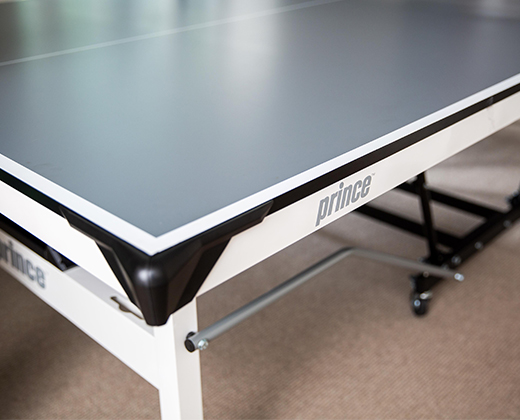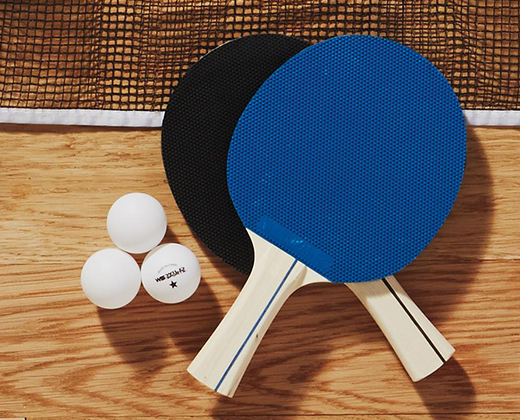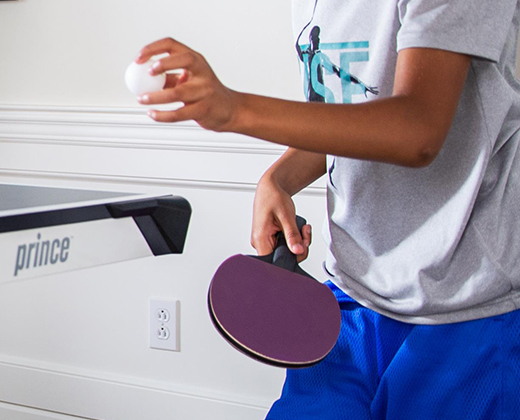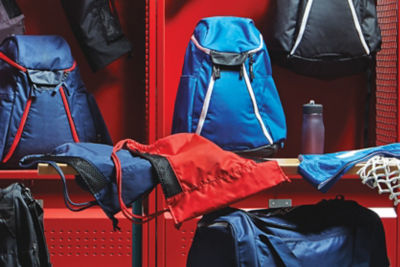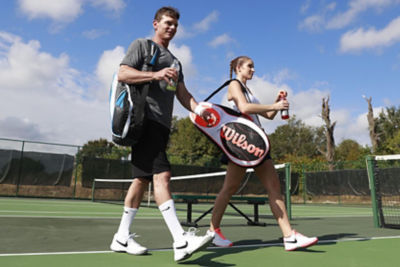Table Tennis Rules to Know
Are you new to table tennis? Discover our Pro Tips guide on table tennis scoring, terms to know, plus its rules and regulations.

From community centers to world championships to the big screen, table tennis transcends sport and pop culture. Anyone can pick up a paddle and play, but to be a true table tennis pro, you’ll need to know the finer details about the game.
GEAR UP
Before you begin to play, you need to make sure you have the right equipment. While more serious paddlers may have specialized apparel and gear, there are four essential pieces of equipment. Each piece has their own regulations.
- Table: This is where play takes place. Tables come in a variety of styles and versions, but the standard size for competitive play is 9 feet long by 5 feet wide by 2.5 feet high. Another key element is the thickness of the surface. Thinner surfaces give the ball less bounce. Serious players will need a table that allows for a bounce of about 77 percent of the initial drop. For more details on table tennis tables, check out this guide on choosing the right table for you.
- Net Assembly: The net assembly divides the playing surface. Some tables come with a net included, while others require a separate purchase. You can attach nets to the table using clamps. When attached, the bottom of the net should be as close to the table as possible. Meanwhile the top should rise 6 inches above the playing surface.
- Ball: Standard table tennis balls should be round with a diameter of 1.57 inches and a weight of 2.7 grams. Made of polymer, balls are either white or orange in color. The color you choose may depend on what is easier to see in the area of play.
- Racquet: Also known as a paddle or a “bat,” the racquet is the most personalized piece of equipment available. Racquets can be a variety of sizes, shapes and weights, but there are some regulations that must be followed. The portion of the paddle used to the hit the ball, known as the blade, must be flat and rigid. Eighty-five percent of the thickness must also be natural wood. The blade can be reinforced with an adhesive layer, provided that it’s no more than 7.5 percent of the total thickness of the blade.
Players can have different surfaces on each side of the blade to allow for different returns, but one side must be red, while the other must be black.
TABLE TENNIS PROTOCOL
Table tennis tournaments are match style where the best of an odd number (typically five or seven) of games determines the winner. Games end once an individual player or team scores 11 points or, in the case of a 10 point tie, when a player or team reaches a two point lead. Game play goes as follows:
- Service: The game begins with a “service,” which is sometimes just referred to as a “serve.” The first service can be decided by lot, such as a coin toss or by having each side rally the ball back and forth before deciding a point.
Once the game begins, the server will use their freehand – the one not carrying the paddle – to throw the ball directly upward. Upon the ball’s descent, the server will strike the ball so that it first touches in their half of the court, bounces over the net assembly without touching it and then touches the opponent’s half of the court.
- Return: If the service is good, the opponent (or receiver) must return the ball before it bounces on their court a second time. Like the serve, the return must pass over the net – although this time it can graze the assembly – and touch the server’s court. In games played with pairs rather than individuals, teammates must alternate their returns during the beginning of each point.
- Rally: Following the initial serve and return, the teams will begin to alternate returning the ball following the same rules. Rallies end with a point (more information on scoring those later) or a let, where neither team scores. Lets occur if the ball touches the net in service, the service begins when the receiver is not ready or if play becomes interrupted by an umpire or outside disturbance.
After a rally ends with a point, play will resume with another service. Regardless of scoring, service will alternate between opponents every two points.
Following the completion of each game in a match, the players will switch sides of the table. In the last game of a match, players will switch once one individual or team scores five points.
TABLE TENNIS TALLIES
Table tennis scoring can occur in a variety of different ways during a rally. Some points are earned with skill, while others are assigned based on the fouls an opponent makes. Here are the most common ways you can receive a point:
- If your opponent fails to return the ball.
- If your opponent returns the ball out of bounds.
- If your opponent obstructs the ball in any way.
- If your opponent strikes the ball twice on a single return attempt.
- If your opponent strikes the ball with part of the racquet that is not covered with rubber.
- If your opponent touches or moves the playing surface or net assembly with their hand.
Points can also be awarded to the opposing individual or team if players do not heed warnings from umpires and commit multiple offenses in the same match. A third offense can lead to a two-point gain for the opponent.
Table tennis can be confusing for newcomers. But now that you know the basic rules, you can paddle up for play.


